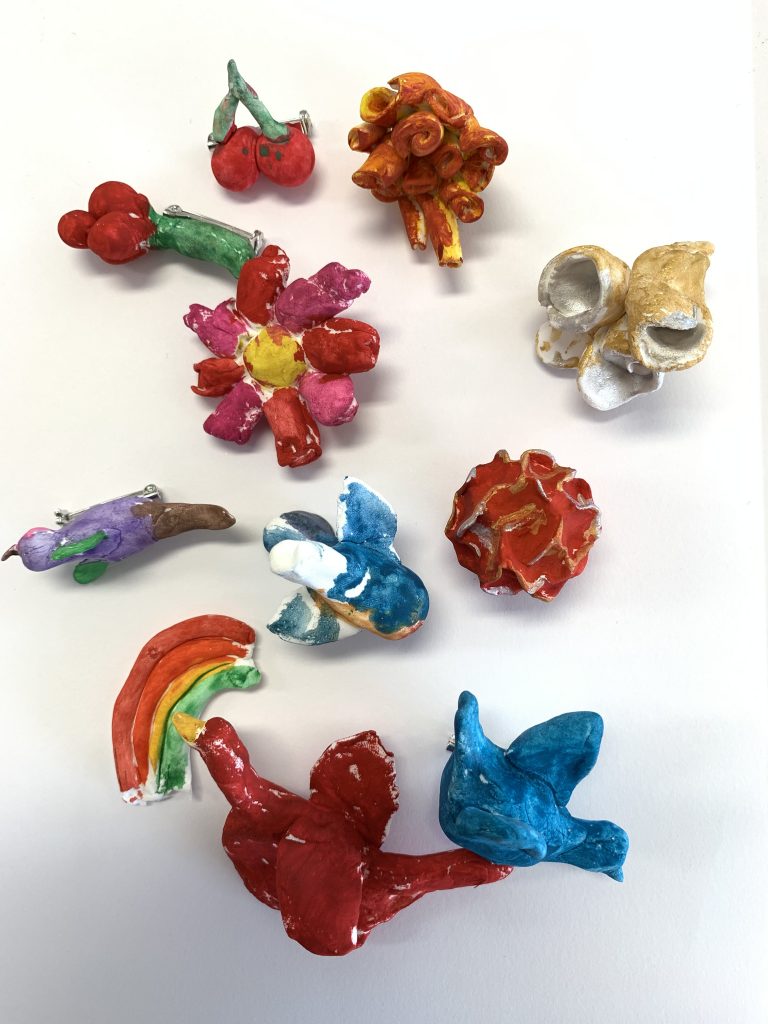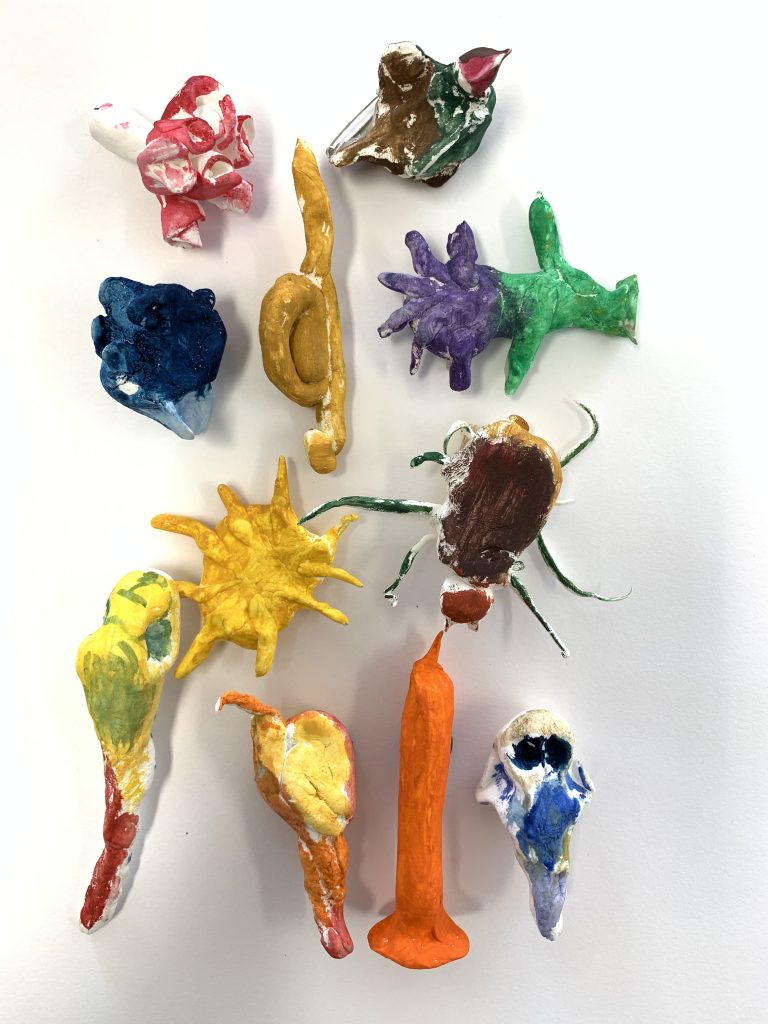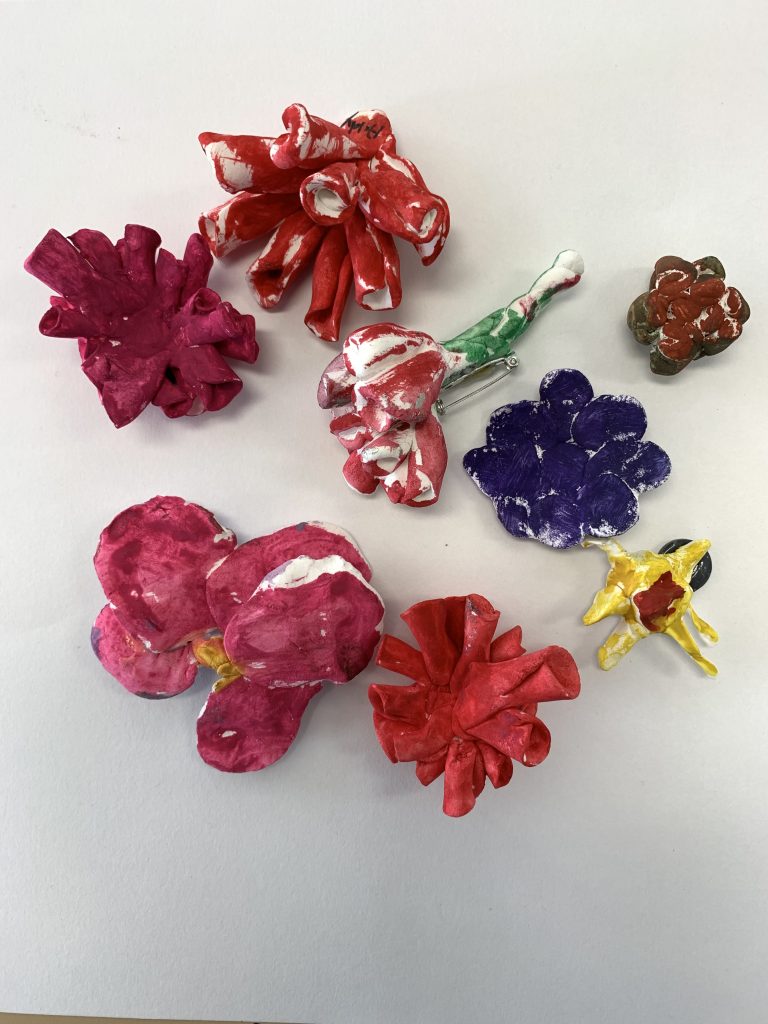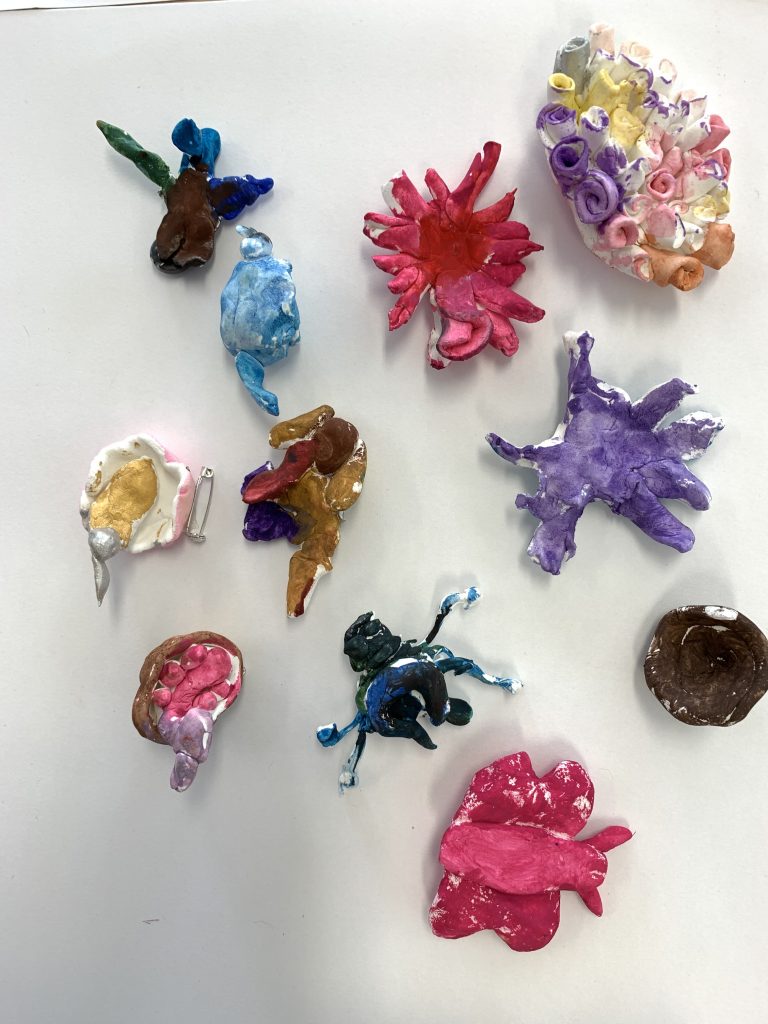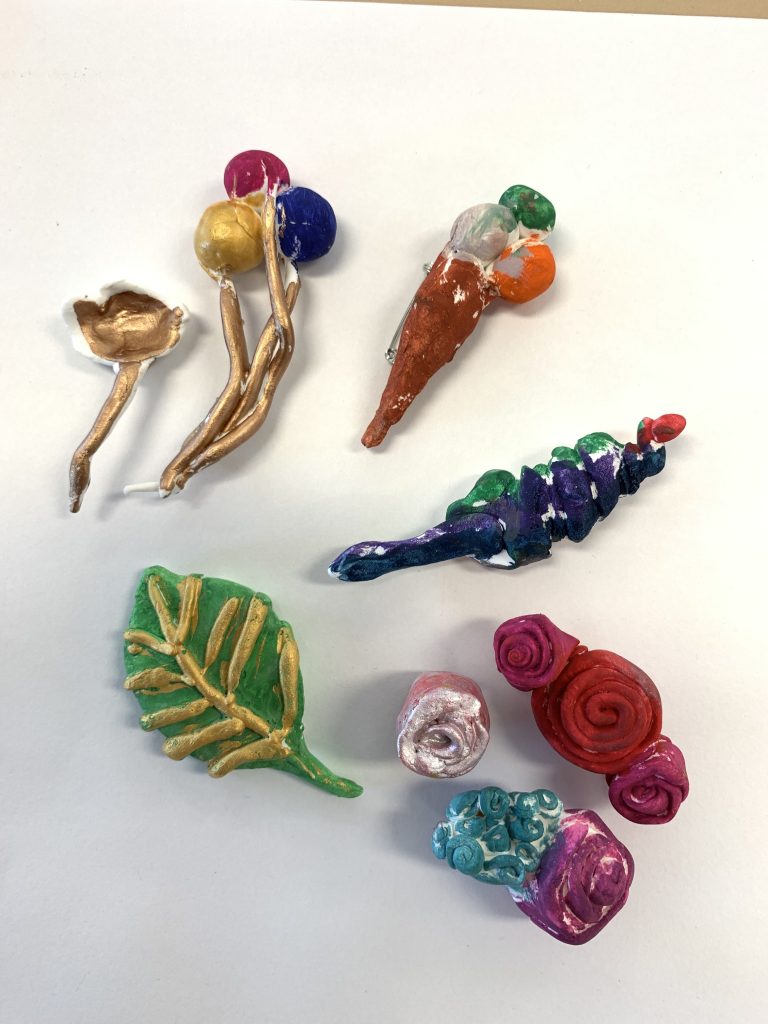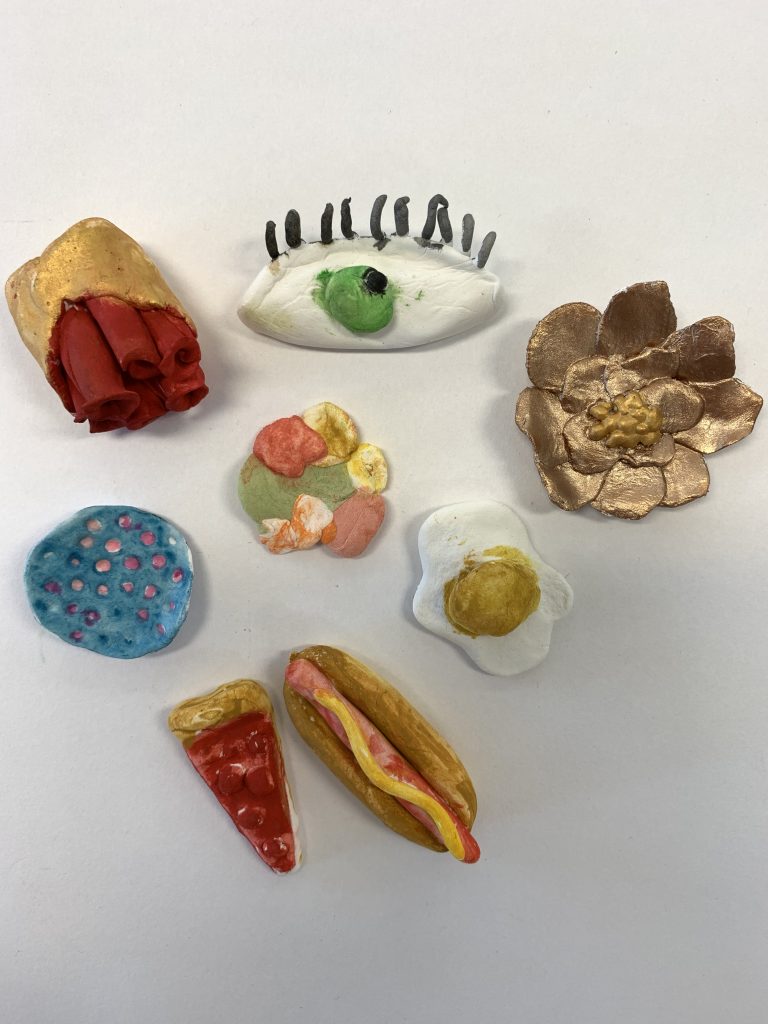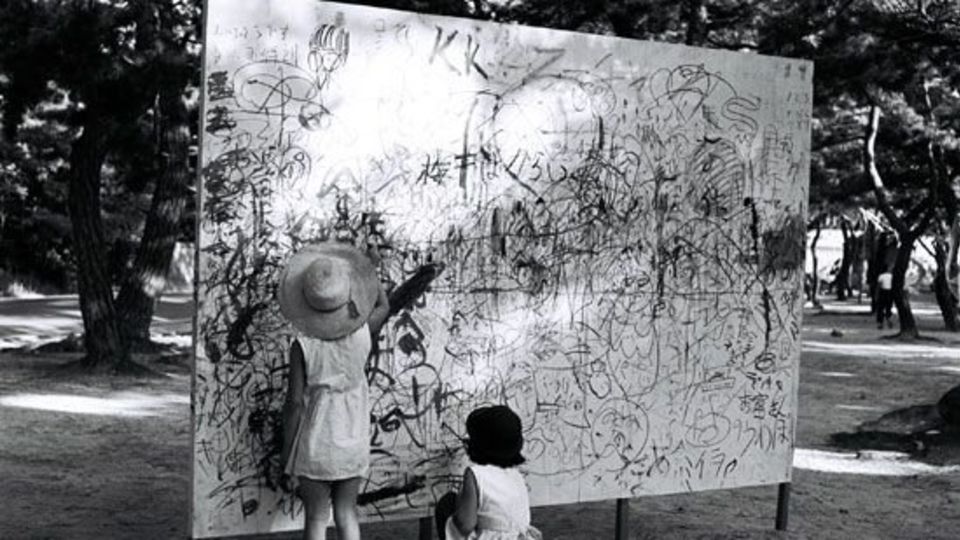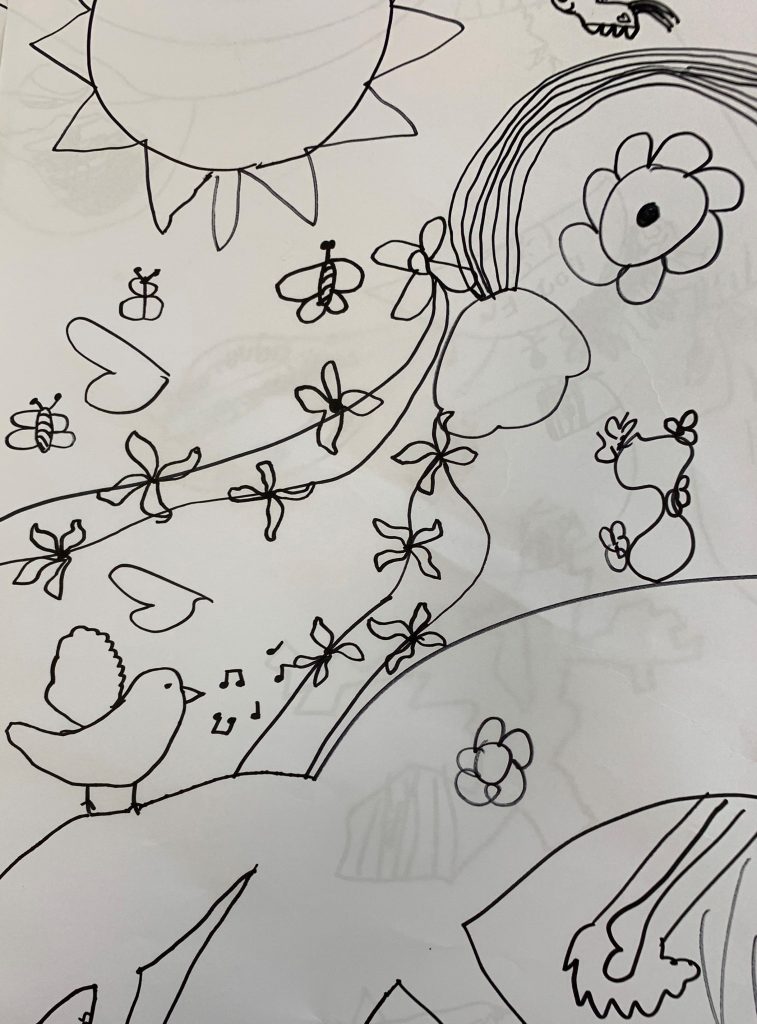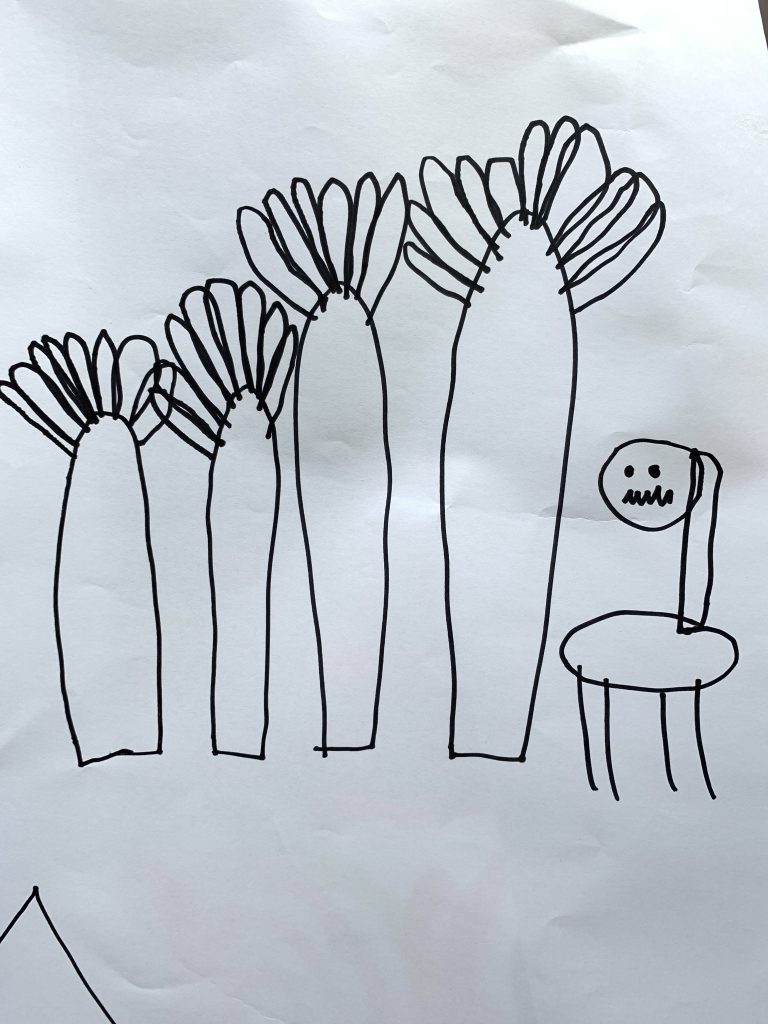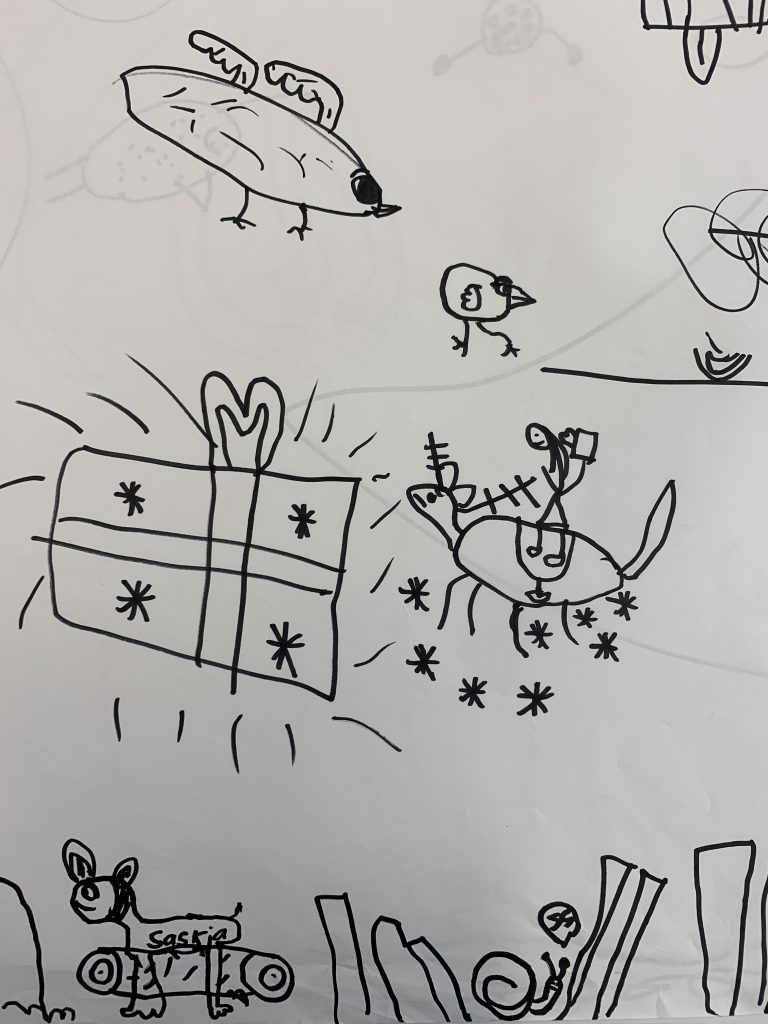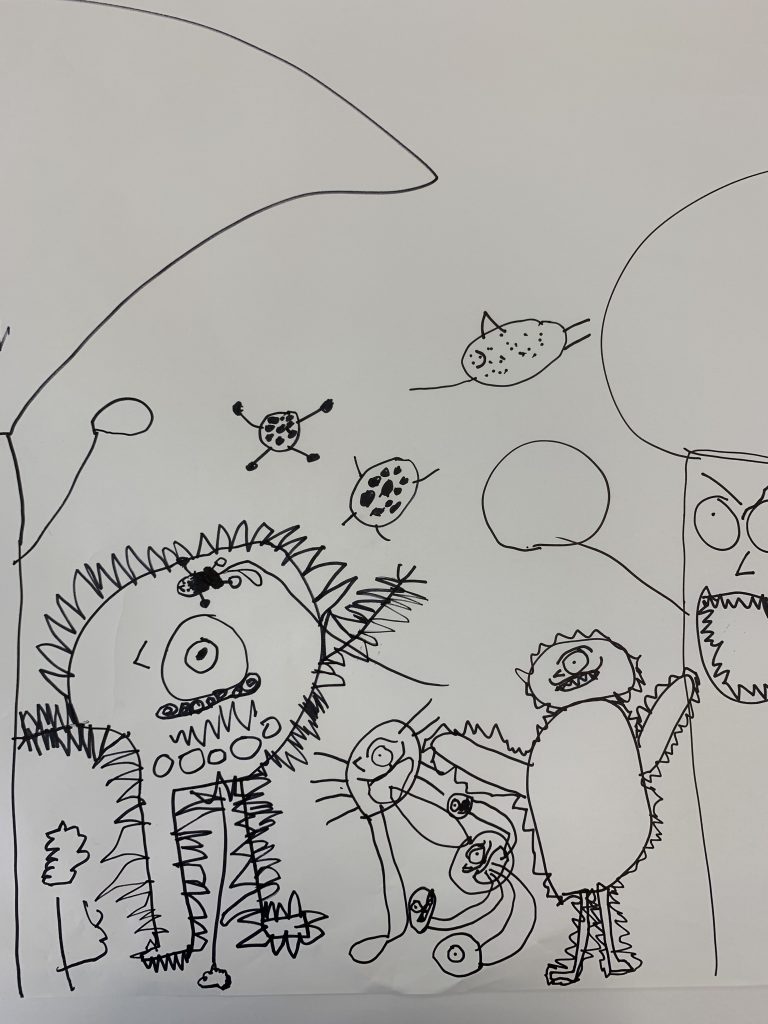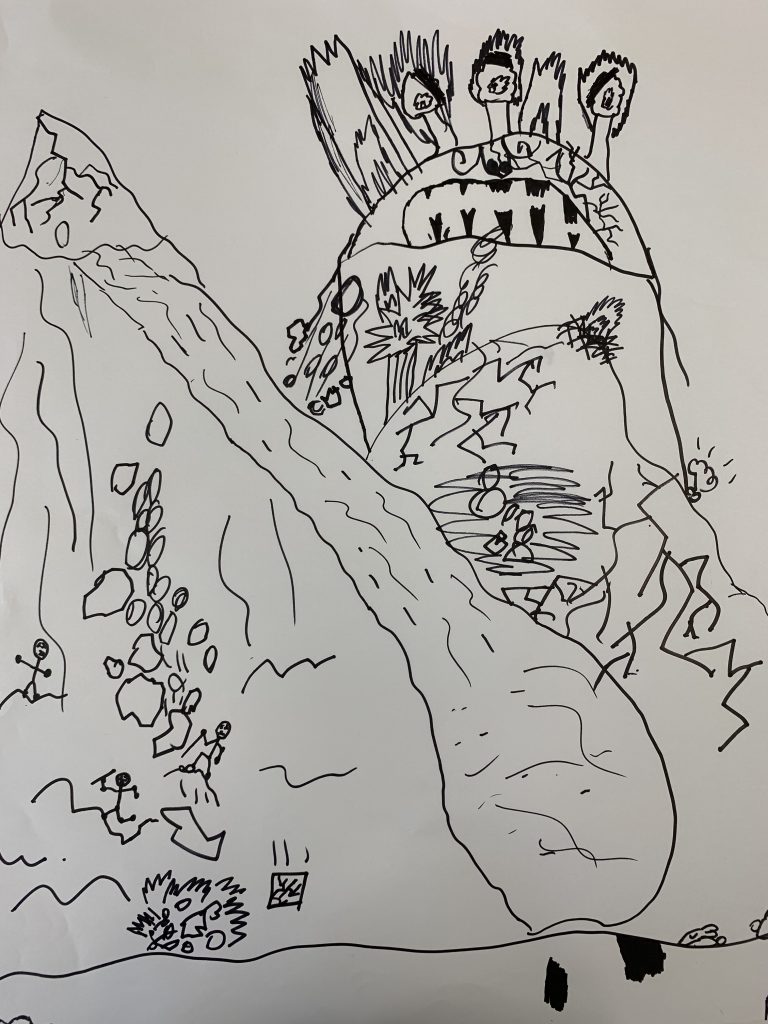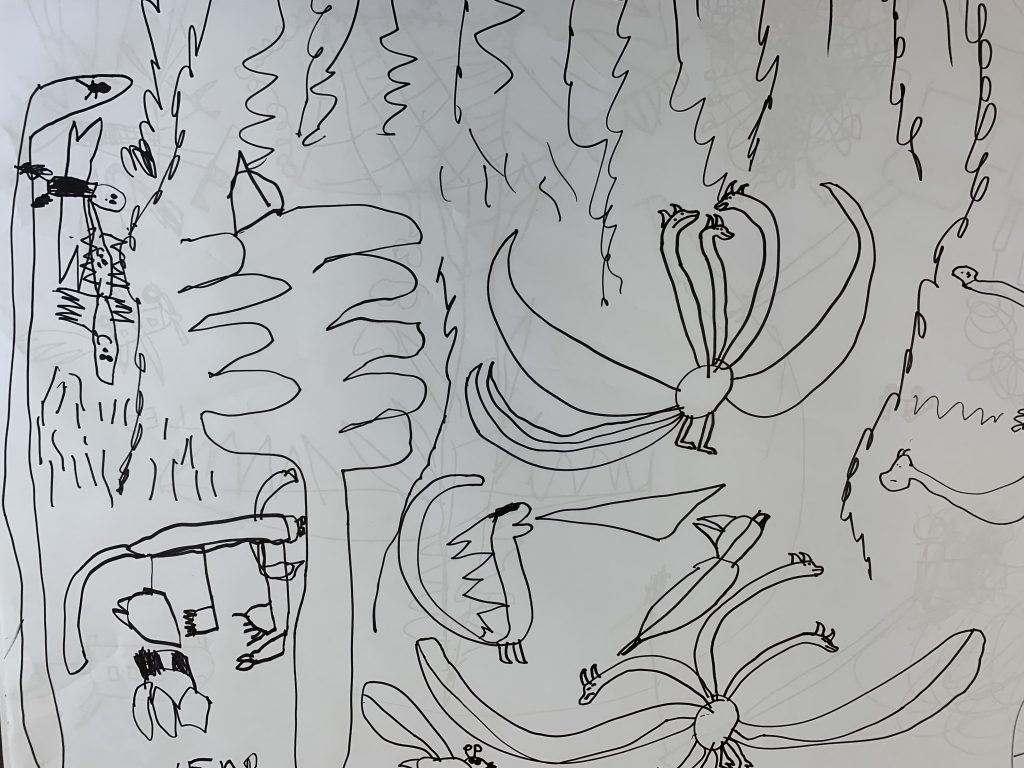Art and Emotion: the power of the visual to communicate…
Week 7: After making the brooches last week, we set about decorating and painting them and attaching the clasp at the back.` Students, much like they did with their postcard art and in the spirit of spreading positive messages of hope to the world, decided on keeping one badge for themselves and gifting one to a friend or family member. These gifts represent a gift of empathy, of awareness of the self in relation to others and the ability to reach out to others to show kindness. Students have played and explored in a range of mediums and means of expression to make concrete their individual and collective thoughts and feelings.
Week 8
“Drawing for me, is essentially a way of thinking through a thought or idea, to document and try to understand what is around me.” Nigel Peake
“Please draw and paint freely”:
This week students explored their ideas collaboratively. The aim was to collectively find symbolic images that represent their range of feelings and thoughts about the world around them.
We were inspired by the Japanese Gutai movement from the 1960’s.
This year the Tate modern in London provided an installation open to the public that allowed them to come and draw freely in a large collaboration. We used this as inspiration for our own collaborative works.
“Please Draw Freely is a large free-standing board on which you are free to draw whatever and however you want!
Created by Yoshihara Jirō in 1956, artists of all ages are welcome to draw, scribble, and sketch as part of this recreation of the original artwork outside Tate Modern. Yoshihara was the leader of the Gutai group of radical Japanese artists who wanted to change the world through painting, performance and children’s play.
The ideology of creating work that had never been done before ran through the current of the Gutai group’s various creations and installments. In combination with this idea, the Gutai group also emphasized rethinking how art should interact with viewers. Gutai members, especially early members, had a fascination with children’s artwork. The ability for this artwork to interact with a wide audience by breaking down walls inspired Gutai artists to not only create their own children’s journal and lead art classes to these young people, but to also create installations that both invited and forced audiences to interact with pieces in non-traditional manners. In the Gutai group’s first outdoor exhibition, all work on display counteracted the museums that imposed strict codes of conduct on museumgoers. The physical walls were broken down, allowing for a more free-flowing creative expression to emerge and permeate itself in the audience membership.” Tate Modern
Students brainstormed a range of adjectives that best represented their feelings in the moment. They discovered that they were often filled with, not one emotion, but a range of emotions. There were many emotions that they had to negotiate in the moment. It wasn’t simply a matter of being happy or sad, but now some expressed that they felt happy, confused and angry all at the same time. This was a new experience for many students.
Working collaboratively in friendship groups, students discussed their feeling and emotions and reflected on ways they could symbolically represent their feelings in images. They made decisions collectively about what the theme of their collaborative work would look like. They then drew a large mural reflecting their thoughts and emotions as a group. This week, students used black felt tip pens to draw their mural. Next week students will reflect on how colour, hue and tone can also communicate and reflect emotional states, and enhance the messages behind the artworks.
Some year 3 expressions of emotions

